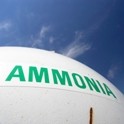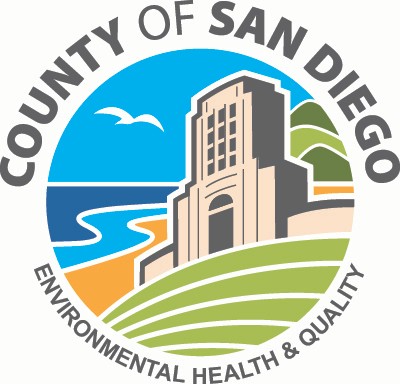CalARP

California Accidental Release Prevention
The County of San Diego, Department of Environmental Health and Quality (DEHQ) is the Certified Unified Program Agency (CUPA) for San Diego County. Under DEHQ, the Hazardous Materials Division (HMD) is the administering agency responsible for implementing the environmental and emergency management programs that make up the Unified Program which includes, but is not limited to, the California Accidental Release Prevention (CalARP) Program. In San Diego County, the terms “HMD” and “CUPA” can be used interchangeably.
CalARP was adapted from the Federal Accidental Release Program established by the Clean Air Act Section 112(r) and modified to meet California’s needs. The goal of the CalARP Program is to prevent accidental releases of regulated substances that pose a high risk of immediate harm to the public and the environment.
A CalARP facility (a.k.a., Stationary Source) is a facility that handles, manufactures, uses, or stores any of the listed Regulated Substances found in Tables 1-3 of the California Code of Regulations (CCR), Title 19, Division 5, Chapter 2, above threshold quantities (TQ). Facilities must submit an RMP if they handle a Federal Regulated Substance in amounts greater than the federal TQ (see Tables 1 & 2) OR if they handle a State Regulated Substance in amounts greater than the State TQ (see Table 3). An RMP summarizes a facility’s accidental release prevention program implementation activities as they relate to:
- Hazard Assessment for Regulated Substances
- Offsite Consequence Analysis/Worst Case Release Scenario
- Hazard Review/Process Hazard Analysis
- Operating and Maintenance Procedures
- Incident Investigation Procedures
- Emergency Response and Training Program
- Triennial Compliance Audits
The HMD/CUPA provides regulatory oversight for the CalARP Program
by:
- Conducting routine inspections of CalARP facilities (Stationary Sources)
- Conducting completeness reviews of Risk Management Plans
- Conducting evaluation reviews of Risk Management Plans
For more information regarding the local implementation of the CalARP Program, please Contact the Hazardous Materials Division Duty Desk at hmdutyeh@sdcounty.ca.gov or call 858-505-6880 and ask for the CalARP Supervisor.
CalARP Regulatory Authority
- State Law: Health & Safety Code (HSC), Division 20, Chapter 6.95, Article 2, starting with Section 25531
- State Regulations: Title 19 of the California Code of Regulations (19 CCR), Division 5, Chapter 2, starting with Section 5050.1
- Federal Law: Clean Air Act (CAA), Section 112(r)
- Federal Regulations: Title 40 of the Code of Federal Regulations (40 CFR), Part 68
5-Year RMP Update Requirement
CalARP facilities are required to review and update their RMP within five years from the date of its initial submittal and every five years thereafter (19 CCR §5070.11). The owner/operator is required to: Review all sections of the RMP & update the RMP as needed Certify that the updated RMP is true, accurate and complete Submit the updated RMP to the HMD/CUPA by the facility’s 5-year due date
RMP Review Process
The CUPA conducts RMP Reviews pursuant to 19 CCR Section 5070.2 which includes the following:
- Consultation and Review (a.k.a., Completeness Review): Completeness shall be determined in accordance with 19 CCR Sections 5070.3 through 5070.10. If no deficiencies are identified, the CUPA shall notify the facility that the RMP is being accepted for completeness and submit the RMP for formal public review.
- Deficiency Notice (if applicable): If the RMP is determined to be incomplete, the CUPA shall issue a Deficiency Notice to the facility outlining said deficiencies. The facility shall have 60-days to correct the deficiencies and resubmit the corrected RMP to the CUPA.
- Formal Public Review: Within 15 calendar days after the CUPA determines that the RMP is complete, the CUPA shall make the RMP available to the public for a 45-day review and comment period by publishing a Public Notice on the CUPA’s website.
- Evaluation Review: The evaluation review shall be conducted by the CUPA at the end of the 45-day public review period (within timelines specified by 5070.2) in which public comments (if applicable) are considered. Additionally, as a result of the Evaluation Review, the CUPA may require the facility to make technical revisions to the RMP.
NOTE: Time spent on the RMP review process and other technical reviews are not captured in the facility’s annual permit fees. Therefore, to fairly target cost recovery for those facilities receiving in-depth consultation and oversite, the CUPA uses direct billing at an hourly rate to account for time spent on these services. Other examples of CUPA coordinated tasks subject to cost recovery include but are not limited to: technical review and consultation for program applicability; Hazard Reviews/Process Hazard Analysis; and other tasks directly related to a Stationary Source or Covered Process .
CalARP Documents
CalARP Guidance:
San Diego County CalARP Program Guidelines Updated September 2023
Regulated Substances/Extremely Hazardous Substances Updated February 2011
Guidance for CalARP Program Seismic Assessments Updated January 2019
CalARP Program FAQ (CalOES) Updated February 2014
CalARP Mixtures FAQ (CalOES) Updated January 2014
Guidance for Facilities on Risk Management Programs (EPA) Updated March 2009
Consolidated List of Lists (EPA) Updated June 2019
CalARP-related Forms:
| Complete form and send to HMD (mail, email or fax): |
| CalARP Screening, Disclaimer and Deregistraion Guide HM-9220 |
| CalARP Screening, Disclaimer and Deregistration Form HM-9221 |
| How to Determine TQs & TPQs HM-9181 |
| CalARP Screening Worksheet HM-9223 |
| Risk Management Plan (RMP) Registration/ Work Plan HM-9240 |
Additional information about CalARP requirements
- California Office of Emergency Services (CalEPA): CalEPA is the State agency that evaluates and provides technical assistance for the Hazardous Material Release Response Plan (a.k.a., Hazardous Materials Business Plan) Program and the CalARP Program.
- California Occupational Safety and Health Administration (CalOSHA): CalOSHA is the State agency responsible for implementing the Process Safety Management (PSM) Standard.
- Environmental Protection Agency (EPA): The EPA is the federal agency responsible for implementing federal laws/regulations. Under CAA Section 112(r), the Office of Emergency Management (OEM) administers the federal Risk Management Plan Rule.
NOTE: Although the CalARP Program and the US EPA RMP and CalOSHA PSM Programs have many regulatory overlaps, these three programs are managed independently by different regulatory agencies. The CUPA’s regulatory authority is limited to the CalARP Program under the HSC and 19 CCR.
California Environmental Reporting System (CERS) and CalARP
At this time, there are no CalARP-specific CERS reporting requirements; however, all regulated CUPA facilities are required by law (Assembly Bill 2286) to submit business information through CERS for the following program elements:
- Facility Information
- Hazardous Materials Business Plan (HMBP)
- Underground Storage Tanks
- Hazardous Waste and Hazardous Waste Onsite Treatment
- Aboveground Petroleum Storage Act
Do not submit your RMP or other CalARP-related documents through
CERS. Any CERS submittals that contain RMP and/or CalARP-related
documents will not be accepted.
Submit your RMP, changes in Emergency Contact or CalARP Qualified Person using the CalARP Registration form (HM-9240) directly to the CUPA's CalARP Coordinator, not through CERS.
For additional information on CERS, please visit the HMD’s CERS Information Page.





